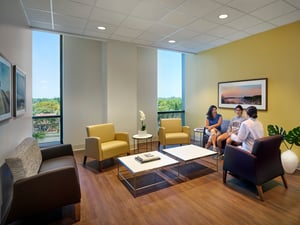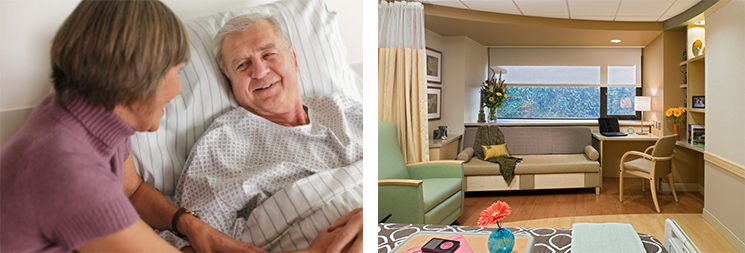 My career in healthcare design began almost immediately after graduating from college when I obtained my first job in architecture and design. I was drawn to healthcare design due to my own internal desire to help others. As an accredited Interior designer, I feel that, given a budget, almost any interior designer can improve the aesthetics of an environment. For me, the real satisfaction comes from being able to not only create an aesthetically-pleasing space, but to be able to provide an environment which meets the stringent guidelines and critical functionality of healthcare design.
My career in healthcare design began almost immediately after graduating from college when I obtained my first job in architecture and design. I was drawn to healthcare design due to my own internal desire to help others. As an accredited Interior designer, I feel that, given a budget, almost any interior designer can improve the aesthetics of an environment. For me, the real satisfaction comes from being able to not only create an aesthetically-pleasing space, but to be able to provide an environment which meets the stringent guidelines and critical functionality of healthcare design.
I spent most of my early career designing healthcare environments, but never had a personal experience from the patient or family perspective until my grandparents became ill. They each had health issues simultaneously, which led to many hospitalizations and procedures to extend their lives. During those extremely difficult times, I truly came to appreciate how important the functionality and aesthetics were to both patients and families. Providing my family with comfortable areas outside of the hospital room was not just a nice detail, but a critical function in the environment. Having a place to step away from the room to discuss the situation as a family or to have a moment of respite are crucial for the caregivers and are often overlooked or an afterthought in the design.
After my grandparents’ hospitalizations, it was clear they would need care in a long-term facility. I saw the deep sorrow my grandparents felt by “losing” their home and needed to start over in a new location while struggling with their day-to-day health. They struggled to find a sense of home and comfort in a foreign building they knew would have to be their new residence. It became critical from my perspective to make their small one-bedroom space feel like home. My family and I worked hard to incorporate cherished items in their rooms to provide a level of comfort through their personal belongings to bring a sense of familiarity into a strange space. It allowed them to have a sense of self and dignity by displaying and using their personal belongings, which they spent their lives collecting. The layout of the belongings also became crucial since my grandfather was also struggling with Dementia. Items within the space needed to be thoughtfully placed to provide and understanding of his new environment.

My life story has allowed me to design with empathy and compassion for both the patient and their family members. Often, families and patients experience the worst time in their lives when they find themselves in a healthcare setting. It is my job as a professional to design a space that truly encompasses a centered approach which values all the users of the environment equally.

